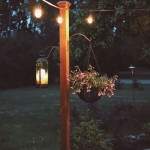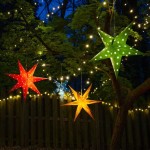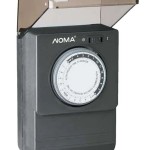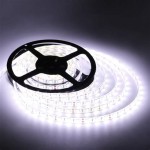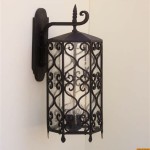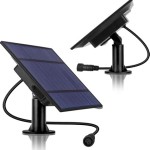Light Fixtures for Outdoor Signs: Illuminating Your Brand
Outdoor signs serve as a crucial visual communication tool for businesses, organizations, and various entities. Their primary function is to attract attention, convey information, and ultimately, drive traffic. However, a sign's effectiveness is inherently linked to its visibility, particularly during nighttime or periods of low light. Therefore, appropriate lighting is not merely an aesthetic consideration; it is an essential component of a successful outdoor sign strategy. Selecting the right light fixtures for outdoor signs involves careful consideration of several factors, including the type of sign, the surrounding environment, energy efficiency, and maintenance requirements. A poorly illuminated sign can be easily overlooked, negating the investment in its creation and installation. Conversely, a well-lit sign can significantly enhance brand visibility and attract potential customers.
The market offers a wide array of lighting options for outdoor signs, each possessing unique characteristics and suitability for specific applications. From traditional incandescent bulbs to modern LED technology, understanding the nuances of each lighting type is crucial for making an informed decision. Furthermore, compliance with local regulations and zoning laws concerning light pollution and energy consumption is paramount. This article aims to provide a comprehensive overview of light fixtures for outdoor signs, covering various types, factors to consider when selecting them, and best practices for installation and maintenance.
Types of Light Fixtures for Outdoor Signs
The selection of light fixtures for outdoor signs is diverse, offering a range of options to cater to different needs and preferences. Each type has its own set of advantages and disadvantages regarding brightness, energy consumption, lifespan, and cost. Here's an overview of some of the most common types:
Incandescent Lighting: Incandescent bulbs were historically the standard choice for outdoor sign lighting. They produce light by heating a filament until it glows. While relatively inexpensive to purchase, incandescent bulbs are highly inefficient, converting a small percentage of electricity into light and the rest into heat. This inefficiency translates to higher energy bills and a shorter lifespan compared to other options. Incandescent bulbs also require frequent replacement, increasing maintenance costs. Due to their low energy efficiency and environmental concerns, incandescent bulbs are becoming increasingly less common and often prohibited in certain areas due to energy regulations.
Fluorescent Lighting: Fluorescent lamps operate by passing an electric current through a gas-filled tube, causing it to emit ultraviolet light, which then excites a phosphor coating on the inside of the tube, producing visible light. Fluorescent lighting is more energy-efficient than incandescent lighting, offering a longer lifespan and lower energy consumption. They are commonly used in channel letter signs and box signs, providing a diffused and even illumination. However, fluorescent lights can be sensitive to cold temperatures, which can affect their brightness and efficiency. They also contain mercury, requiring special disposal procedures.
High-Intensity Discharge (HID) Lighting: HID lamps, including metal halide and high-pressure sodium lamps, produce light by creating an electric arc through a gas mixture. They are known for their high light output and are often used for illuminating large signs and billboards. Metal halide lamps offer a good color rendering index (CRI), meaning they accurately display the colors of the sign. High-pressure sodium lamps, on the other hand, emit a yellowish-orange light, which can affect color perception. HID lamps require a ballast to regulate the current and voltage, and they have a warm-up period before reaching full brightness. They are also relatively energy-efficient compared to incandescent bulbs but less so than LED lighting.
LED Lighting: Light-emitting diodes (LEDs) are semiconductor devices that emit light when an electric current passes through them. LED lighting has revolutionized the outdoor sign industry due to its numerous advantages. LEDs are highly energy-efficient, consuming significantly less electricity than incandescent, fluorescent, and HID lamps. They have an exceptionally long lifespan, reducing maintenance costs and the need for frequent replacements. LEDs are also durable, resistant to vibrations and impacts, and can operate in a wide range of temperatures. Furthermore, LEDs offer excellent color rendering and can be easily controlled to produce a variety of colors and effects. They are available in various forms, including individual LEDs, LED strips, and LED modules, making them versatile for different sign types. While the initial cost of LED lighting may be higher, the long-term savings in energy and maintenance make them a cost-effective choice.
Neon Lighting: Neon lighting utilizes glass tubes filled with neon gas (or other gases for different colors), which are illuminated by passing an electric current through them. Neon signs are known for their vibrant colors and distinctive aesthetic appeal. They are often used for creating eye-catching displays and retro-style signage. However, neon lighting is relatively energy-inefficient compared to LED lighting, and the glass tubes are fragile and prone to breakage. Neon signs also require specialized installation and maintenance due to the high-voltage electricity involved.
Key Factors to Consider When Selecting Light Fixtures
Choosing the appropriate light fixtures for outdoor signs requires careful evaluation of several factors to ensure optimal performance, energy efficiency, and cost-effectiveness. Each factor plays a crucial role in determining the overall success of the sign illumination.
Brightness and Light Distribution: The brightness, measured in lumens, is a crucial factor in determining the visibility of the sign, especially at night. The required brightness level depends on the size of the sign, the ambient light levels in the surrounding environment, and the desired impact. It is important to choose light fixtures that provide adequate brightness without causing glare or light pollution. Light distribution refers to how the light is spread across the sign's surface. Uniform light distribution is essential for ensuring that the entire sign is evenly illuminated, without any dark spots or areas of excessive brightness. Different light fixtures offer different light distribution patterns, such as floodlights, spotlights, and linear lights. Selecting the appropriate light distribution pattern depends on the shape and size of the sign and the desired effect. For instance, floodlights are suitable for illuminating large surfaces, while spotlights are ideal for highlighting specific features.
Energy Efficiency and Operating Costs: Energy efficiency is a significant consideration, both from an environmental and an economic perspective. Energy-efficient light fixtures consume less electricity, resulting in lower energy bills and a reduced carbon footprint. LED lighting is the most energy-efficient option available, offering substantial savings compared to traditional incandescent, fluorescent, and HID lamps. When evaluating energy efficiency, it is important to consider not only the wattage of the light fixture but also its lumen output (brightness) and lifespan. A light fixture with a lower wattage but a higher lumen output is more energy-efficient. Similarly, a light fixture with a longer lifespan will reduce maintenance costs and the need for frequent replacements. Calculating the total operating costs of light fixtures involves considering the purchase price, energy consumption, and maintenance expenses over their expected lifespan.
Durability and Weather Resistance: Outdoor signs are exposed to harsh weather conditions, including rain, snow, wind, and extreme temperatures. Therefore, it is essential to select light fixtures that are durable and weather-resistant. Look for fixtures that are made from high-quality materials, such as aluminum or stainless steel, and that are designed to withstand the elements. The Ingress Protection (IP) rating indicates the level of protection that a light fixture offers against dust and water. A higher IP rating indicates greater protection. For outdoor applications, it is recommended to choose light fixtures with an IP rating of at least IP65, which provides protection against dust and water jets. The operating temperature range of the light fixture is also an important consideration, especially in regions with extreme climates. Ensure that the light fixture is rated to operate within the expected temperature range.
Installation and Maintenance Best Practices
Proper installation and regular maintenance are crucial for ensuring the longevity and optimal performance of outdoor sign lighting. Following best practices can prevent premature failure, minimize downtime, and maximize the return on investment.
Professional Installation: Installing outdoor sign lighting requires specialized knowledge and skills. It is recommended to hire a qualified electrician or sign installer to ensure that the installation is done correctly and safely. Incorrect wiring can lead to electrical hazards and damage the light fixtures. Proper mounting and securing of the light fixtures are essential to prevent them from falling or being damaged by wind. The electrician should also ensure that the wiring complies with local electrical codes and regulations. Furthermore, professional installation can help optimize the light distribution and maximize the visibility of the sign.
Regular Inspections and Cleaning: Regular inspections can help identify potential problems before they become major issues. Check the light fixtures for signs of damage, such as cracks, corrosion, or broken lenses. Ensure that the wiring is intact and that there are no loose connections. Clean the light fixtures regularly to remove dirt, dust, and debris, which can reduce their brightness and lifespan. Use a soft cloth and mild detergent to clean the lenses and housings. Avoid using abrasive cleaners or solvents, which can damage the surfaces. Regular cleaning can also help prevent the buildup of mold and mildew, which can further reduce the light output.
Timely Replacements: Even with proper maintenance, light fixtures will eventually need to be replaced. The lifespan of light fixtures varies depending on the type and quality. LED lighting typically has a longer lifespan than traditional incandescent, fluorescent, and HID lamps. Monitor the performance of the light fixtures and replace them promptly when they start to dim or fail. Replacing light fixtures in a timely manner can prevent dark spots on the sign and maintain its overall visibility. When replacing light fixtures, it is important to choose compatible replacements that meet the same specifications. Using incompatible replacements can damage the electrical system and reduce the performance of the sign lighting.

Outdoor Sign Lighting For New Bbq Deck Inspiration Barn Light Electric

Outdoor Sign Lighting For New Bbq Deck Inspiration Barn Light Electric

Led Outdoor Sign Lighting Fixtures Commercial

Fl90 Solar Powered Gooseneck Outdoor Lighting For Signage

Commercial Outdoor Led Sign Light Fixtures Signage Lighting

Commercial Outdoor Led Sign Light Fixtures Signage Lighting

Led Lamp For Outdoor Use With Solar Panel Idfdesign

How To Set Up Gooseneck Sign Lights Aqlighting

2024 Outdoor Billboard Led Lighting Energy Saving Sign Lights

Barn Light Gooseneck Lighting Accents Restaurant Exterior Inspiration Electric
Related Posts
